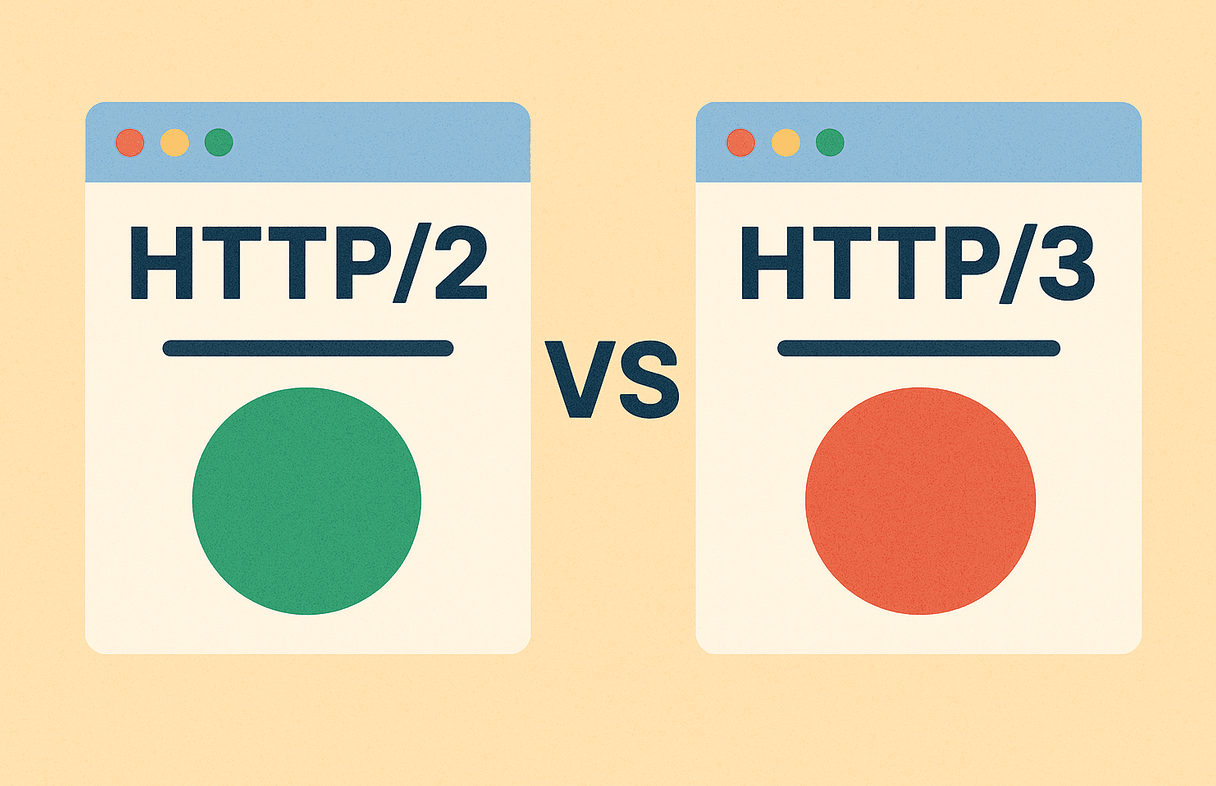When you load a website, a lot is happening behind the scenes to make sure the page shows up quickly and smoothly. The protocol handling that job has gone through some major upgrades over the years. HTTP/2 improved things a lot compared to the old-school HTTP/1.1, and now HTTP/3 is stepping in with an even bigger shift.
So what’s the real difference between HTTP/2 and HTTP/3? And do you actually need to care if you’re building or running websites in 2025? Let’s break it down in plain English.
A quick refresher on HTTP/2
HTTP/2 has been around since 2015 and became the default protocol for many websites. It improved a lot over the old HTTP/1.1 by introducing multiplexing, header compression, and server push. Instead of sending one request at a time (which made things slow), it allowed multiple requests to be handled over a single connection.
Pros
- Much faster than HTTP/1.1
- Multiplexing avoids the "head-of-line blocking" from older versions
- Widely supported across browsers and servers
- Easy upgrade from HTTP/1.1
Cons
- Still uses TCP, which can cause latency issues when packet loss happens
- Server push ended up being underused and is slowly fading out
- Needs TLS for most browsers, which adds setup complexity
Enter HTTP/3
HTTP/3 is the new kid on the block, built on top of QUIC (Quick UDP Internet Connections). Instead of TCP, it uses UDP, which is lighter and avoids some of the problems that come with TCP handshakes. QUIC also includes encryption by default, so you don’t need an extra TLS layer.
The result? Faster, more reliable connections especially for mobile users where networks can be unstable.
Pros
- Built on QUIC, so no head-of-line blocking at the transport layer
- Faster connection setup, especially on flaky networks
- Encryption is baked in, no need for extra TLS handshakes
- Better user experience on mobile and wireless
Cons
- Still rolling out support is solid in Chrome, Firefox, Safari, and Edge, but server adoption is ongoing
- More CPU-intensive in some setups due to encryption being always-on
- Some old tools and proxies don’t fully support QUIC yet
Should you switch in 2025?
If your site already runs on HTTP/2, you’re not in bad shape. For many desktop users on stable broadband, the difference between HTTP/2 and HTTP/3 won’t be night and day. But for mobile-heavy traffic, global audiences, or latency-sensitive apps (think SaaS tools, real-time dashboards, or multiplayer games), HTTP/3 can make a noticeable difference.
The good news is most modern servers and CDNs now support HTTP/3 out of the box. For example, Cloudflare has had QUIC and HTTP/3 support enabled by default for years (Cloudflare docs). NGINX and LiteSpeed also support it, and if you’re running on something like Google Cloud or AWS CloudFront, chances are you can toggle it on with minimal effort.
Tools to test and explore
- Geekflare HTTP/3 Test – quick check if a site supports HTTP/3
- HTTP/3 Check – see live support status for any domain
- Wireshark – if you want to get nerdy and analyze QUIC traffic
Final thoughts
HTTP/2 isn’t going anywhere soon, but HTTP/3 is clearly the future. The shift to QUIC makes sense in a world where mobile and unreliable connections dominate. If you’re running a site with a global audience or anything performance-sensitive, 2025 is a good time to enable HTTP/3 and start collecting data.
For everyone else, staying on HTTP/2 is fine for now just be ready to flip the switch when your stack and audience demand it.
Key Takeaways
- HTTP/3 uses QUIC protocol over UDP, eliminating TCP head-of-line blocking issues
- HTTP/3 offers faster connection setup and better mobile performance on unstable networks
- Most modern CDNs and servers support HTTP/3 with minimal configuration required
- Switch to HTTP/3 for mobile-heavy traffic, global audiences, or latency-sensitive applications
- HTTP/2 remains sufficient for desktop users on stable broadband connections
